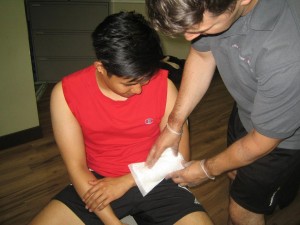Shock is considered as a life-threatening condition. Regardless of the type of shock, it has a common characteristic in which it disrupts with the ability of the body to provide blood to all the bodily tissues.
https://www.youtube.com/watch?v=iJX_L3yg05M
For adequate perfusion to the body tissues, there must be enough blood to be circulated through the blood vessels as well as the capillaries.
What is the cause?
Shock has various causes and in the late stages, it usually results to a drop in the blood pressure. Once the body can preserve the blood pressure even while shock is developing, it is called as compensated shock. If the blood pressure starts to drop, it is called as uncompensated shock which is a serious condition that can be deadly, especially if not properly managed.
Types of shock
Hypovolemic
This type of shock arises due to the inadequate fluid within the bloodstream. The vessels might still be whole and pump properly, but the fluid is reduced.

Hypovolemic shock might occur from direct bleeding or from other forms of fluid loss. It is important to note that dehydration is the usual cause of hypovolemia.
Distributive
Distributive shock occurs if the blood vessels expand excessively. The amount of blood in the system might be low or normal but the blood vessels expand too large to maintain proper pressure.
Cardiogenic
Congestive heart failure is an example of cardiogenic shock. The condition occurs if there is back-up of blood into the body or into the lungs since one side of the heart has been damaged by a heart attack. The functional side of the heart continues to pump at full speeds while the damaged side could not cope, and the blood pressure is affected.
Obstructive
This type of shock occurs if the blood flow is obstructed by an external force. An example is tension pneumothorax where air builds up in the chest outside the lungs and places pressure on the heart and other vessels. As the pressure rises, the heart could not adequately pump, and the blood flow is limited via the vessels that are crushed.
More Information / Disclaimer
The information posted on this page on shock is for learning purposes only. Learn to recognize the signs and how it is managed by taking a standard first aid course with Mississauga First Aid.
